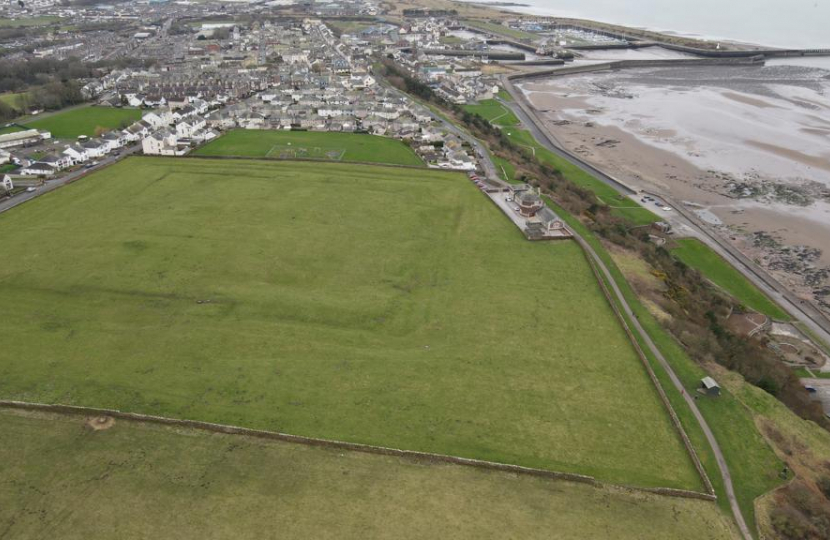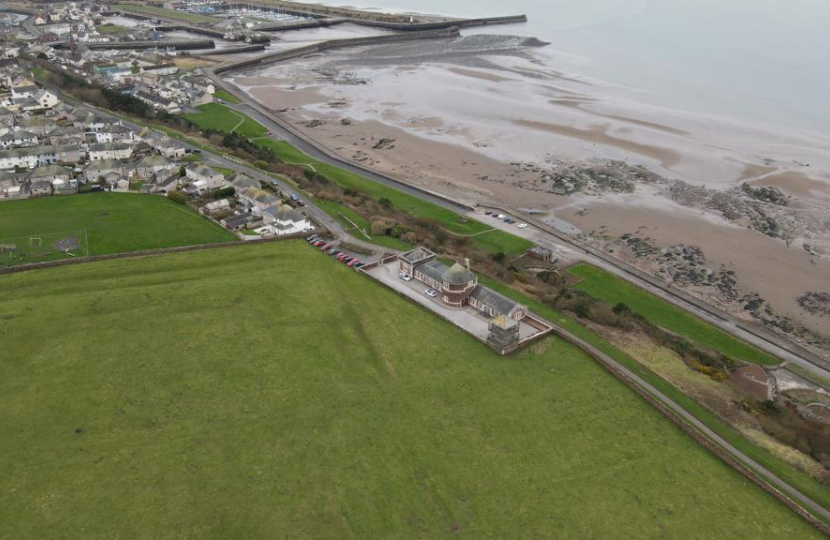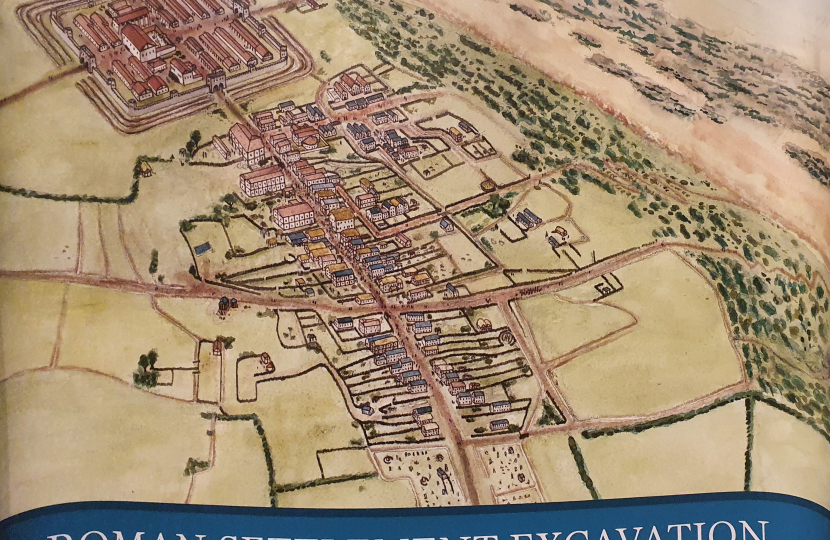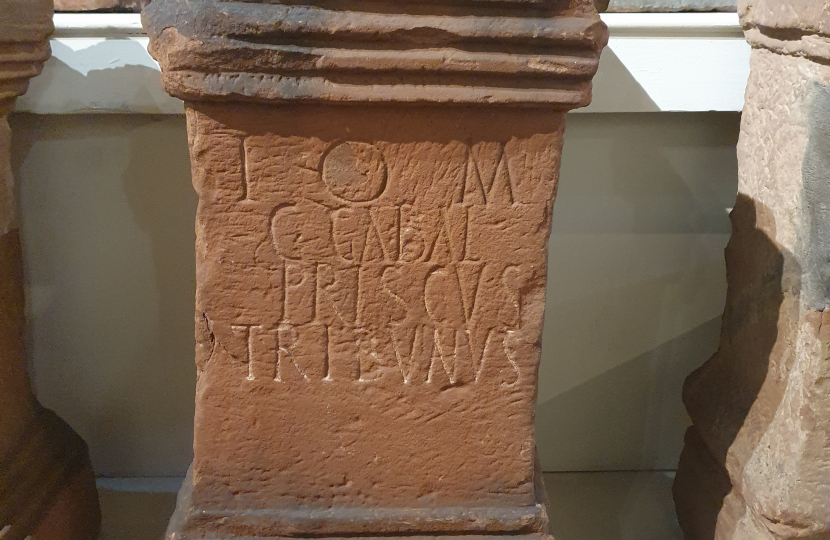The aerial view shows show the award-winning museum Senhouse Roman Museum and, next to it, the rectangular outline of the fort known as Alauna.
The museum is home to the largest cache of pagan Roman altars ever found in Britain – discovered in a nearby field.
Strategically sited on cliffs overlooking the Solway Firth, a military base was probably founded here in the first century AD only to be rebuilt during the reign of the Emperor Hadrian.
Alauna (Maryport) was linked by a Roman roads to the fort and settlement at Derventio (Papcastle) to the southeast, to the regional hub of Luguvalium (Carlisle).
The Roman fort site was owned from the sixteenth century by generations of the Senhouse family. The main building on the site was constructed as a naval artillery drill hall in 1885 and was converted into a museum in 1990.
Most of the objects in the Museum derive from the fort at Maryport and the Roman civil settlement attached to it.
The Museum also contains unique examples of Romano-British religious sculpture, including the mysterious Serpent Stone.
The 17 altars were discovered buried in pits in the foundations of what would have been a huge timber building from the twilight of Roman Britain. It had long been assumed that the altars had been buried here as ritual deposits.
But the Newcastle University team investigating this edifice led by Ian Haynes and Tony Wilmott have debunked that myth.
Antiquarian investigation of the pits in 1870 revealed that some contained Roman altars, dedicated by the commanding officer of the unit stationed in the fort, which helped secure the western, coastal flank of Hadrian’s Wall.
Carved into the red sandstone face of many altars were the letters IOM, meaning Iupiter Optimus Maximus: ‘Jupiter Best and Greatest’. Received wisdom about the pits had been they were dug to receive altars on a cyclical, possibly an annual basis, whenever a new altar was dedicated above ground.
But later investigations of the site, including one in 2011, found that early antiquarians and overlooked important evidence. So frantic were they to uncover more of these remarkable altars that they had failed to notice that these pits also contained postholes.
It appears that the builders were simply using them as ballast in the foundation of the buildings (rather than burying them with ritual reverence). This late Roman building may have been a Church.
The size, space between and depth of the posts indicate that this would indeed have been a large and impressive structure.
For more information about the museum visit http://www.senhousemuseum.co.uk/








